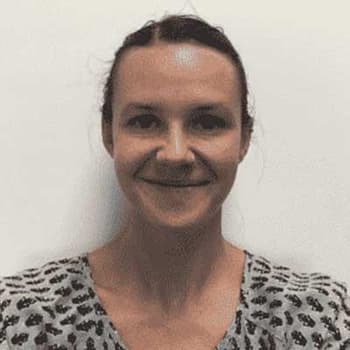Dissociative disorders are a group of confounding psychiatric conditions caused by response to stressors. Learn more about statistics on dissociative disorders.
Dissociative disordersare a group of conditions defined as psychological disturbances that impact an individual’s ability to function and closely overlap withpsychotic disorders. These include disturbances affecting:
- Memory
- Motor Control
- Concept of Identity
- Behaviors
- Emotions
- Perceptions
Dissociative disorders statistics suggest that these disorders are often misdiagnosed or underdiagnosed in the general population. Currently, there are no specific drugs used to treat dissociative disorders since they co-occur with several psychiatric disorders.
Prevalence of Dissociative Disorders
The prevalence of dissociative disorders is how common these disorders are in a given population. In industrialized nations, the prevalence of dissociative disorders is estimated at 2.4% of the population.
Dissociative disorders candevelopin a wide variety of people and at any point in life. One commonality is that they usually develop inresponseto traumatic life events. Some dissociative disorder facts include:
- Nearlyhalfof all American adults exhibit symptoms of a dissociative disorder for a short period in their lives
- Only 2% of those adults develop a chronic dissociative disorder
- In clinical settings (inpatient and outpatient psychiatric clinics), the prevalence of dissociative disorders is estimated at nearly10%
- People whouse substances, female prostitutes and exotic dancers report the highest rates of dissociative disorders compared to members of the general population
- Women are disproportionately impacted by dissociative disorders
- Asian and African Americans report higher rates of dissociative disorders over their Caucasian American counterparts
- Dissociative disorders commonly develop before theage of 20
Dissociative Amnesia
Dissociative amnesiais the most common dissociative disorder and is characterized by the inability to recall certain events of periods of time. Unrecallable periods involve traumatic or high-stress experiences that cannot be explained by typical forgetfulness. Future behaviors of an individual with dissociative amnesia can be significantly impacted by their traumatic experiences.
Dissociative amnesia statistics and facts include:
- Dissociative amnesia disproportionately affectswomen
- Approximately 1% of men and 2.6% of women have dissociative amnesia
- Individuals diagnosed with dissociative amnesia often present with a normal physical and neurological exam relative to their counterparts with traditional memory loss
Dissociative Identity Disorder
Dissociative identity disorder is a condition whereby an individual develops two or more different personality states at one time. This disorder commonly arises in individuals who experienced trauma or extremely stressful situations in childhood. The development of this condition corresponds with a subconscious desire to break away from reality as a means of protecting oneself. Some facts and statistics on dissociative identity disorder include:
- Individuals with this disorder alter between personality states
- Dissociative identity disorder has a prevalence of 1.3% in the general population
- Dissociative identity disorder has a prevalence of 5.8% in substance-dependent inpatient populations
Depersonalization-Derealization Disorder
Depersonalization-derealization disorderis a condition where an individual does not feel physically, mentally or emotionally connected with their body. An individual with depersonalization may feel like they are observing their own life as an outsider, while individuals with derealization may believe that their surroundings are fake or unreal.
Statistics and facts on depersonalization-derealization disorder include:
- Both depersonalization and derealization are triggered by episodes of severe stress
- About half of the population at large experiences depersonalization-derealization at least once in their lives
- Approximately 2% of the general population goes on to develop a depersonalization-derealization disorder
Dissociative Fugue
Dissociative fugueis a psychological state where individuals lose sense of their previous selves. A fugue state is a type of dissociative amnesia. This disorder usually involves losing some or all memories of past events and the creation of a new life completely separate from an individual’s previous one. Physical travel is almost always involved in dissociative fugue. Some interesting facts and statistics on this condition include:
- Fugue states can be asshortas a few hours and in rare cases, last more than a few months
- This type of dissociative amnesia is generally diagnosed after a fugue state ends when enough information can be collected on the individual’s activity by medical professionals
- Dissociative fugue has a prevalence of 0.2% in the general population
- Adults are more likely to experience dissociative fugue than children
Related Topic:Dissociative fugue disorder treatment
Symptoms of Dissociative Disorders
Unfortunately, manysymptoms of dissociative disordersand other psychiatric conditions overlap, so it can be difficult for medical professionals to make accurate diagnoses. However, if an individual exhibits several symptoms simultaneously, they may have a dissociative disorder. Some of these symptoms include:
- Identity issues
- Memory loss of certain events, people or places that cannot be attributed to brain damage or normal memory loss
- Thoughts of suicide
- Having anxiety and depression
- Emotional, physical, or mental numbness
- Feeling detached from oneself, other people, places and things
- Feeling like an individual is watching their own life as a passive observer, rather than living it actively
Diagnosing Dissociative Disorders
Dissociative disorders are diagnosed using the Diagnostic and Statistical Manual of Mental Disorders, a comprehensive diagnostic tool developed by the American Psychiatric Association. In many cases, medical professionals diagnose dissociative disorders based on criteria that rule out other physical, psychiatric or neurological conditions.
Typically, a medical professional performs aphysical examinationand takes an extensive medical history on an individual before evaluating for:
- Brain tumors or head injuries
- Poor sleep habits
- Drug use
- Seizures
If an individual’s symptoms cannot be explained by other medical means and they exhibit numerous symptoms of dissociative disorders, the individual may be diagnosed with one of these disorders.
Dissociative Disorders and Co-Occurring Conditions
A co-occurring condition is any condition that occurs simultaneously with another. Since dissociative disorders are thought to be rooted in significant trauma, they often co-occur with similar conditions. Some of these co-occurring conditions include:
- Somatoform: An individual with asomatoform conditiontypically presents with physical symptoms that have no identifiable physical, neurological or psychiatric cause. These disorders include pain, hypochondriasis, body dysmorphic, somatization and conversion disorders. Somatoform and dissociative disorders overlap because they are both currently misunderstood and understudied, and physiological causes are difficult to identify.
- Conversion Disorder: This disorder is a type of somatoform disorder where individuals have problems with involuntary motor and sensory functioning.Conversion disorderand dissociative disorders overlap because they are both fairly difficult to diagnose and are likely caused by stressful experiences.
- Obsessive-Compulsive Disorder (OCD): This disorder is defined as having obsessive or recurring thoughts, along with thoughts that must physically or mentally be acted on, referred to as compulsions.OCDand dissociative identity disorder often co-occur as individuals often have overlapping memory and attention dysfunction.
- Anxiety:Anxietyis a common condition where individuals have distressing thoughts about future events. Anxiety and dissociative conditions often co-occur as dissociation can cause severe anxiety. Likewise, anxiety may be a symptom of dissociative disorders.
- Alcohol Use: Excessivealcohol usecan lead to lapses in memory similar to those seen in dissociative amnesia.Alcohol use and dissociative disordersoften co-occur because individuals use substances as a means to escape their reality. Unfortunately, alcohol and other substances can exacerbate dissociation symptoms.
- Post-Traumatic Stress Disorder (PTSD):PTSDis a disorder caused by experiencing an extremely traumatic event like a mass shooting, a car crash or the sudden death of a loved one, among other causes. PTSD and dissociative disorders often co-occur since dissociation is one of the diagnostic criteria for diagnosing PTSD.
Prognosis for Dissociative Disorders
The prognosis for dissociative disorders varies depending on the specific disorder. However, with proper treatment, including therapy, development of coping skills and sometimes medication, many individuals can live a relatively normal life.
Statistics on Dissociative Disorders Treatment
Typicaltreatment for dissociative disordersvaries depending on the severity of an individual’s condition. Nevertheless, there are many overlapping treatments for each disorder. Some of these include:
- Dissociative amnesia and dissociative fugue can be treated with hypnosis, psychotherapy, and techniques to retrieve lost memories
- Dissociative identity disorder can be treated with psychotherapy, techniques to integrate personality states, and medication if necessary
- Depersonalization-derealization disorder can be treated with psychotherapy, includingcognitive behavioral therapyor medication if necessary. Techniques focus on becoming more aware of one’s body and surroundings
As mentioned, there is no one specific drug treatment for dissociative disorders. Every treatment is developed for an individual on a case-by-case basis. Often, the presence of aco-occurringcondition dictates the type of therapy or medication for these individuals.
Are you or a loved one struggling with a dissociative disorder as well as a substance abuse disorder? The Recovery Village has a trained team of medical professionals and clinical counselors ready to help you or someone you know get help for a dissociative disorder and co-occurring addiction.Call The Recovery Village todayfor more information.
Related Topic:Treatment for depersonalization
















